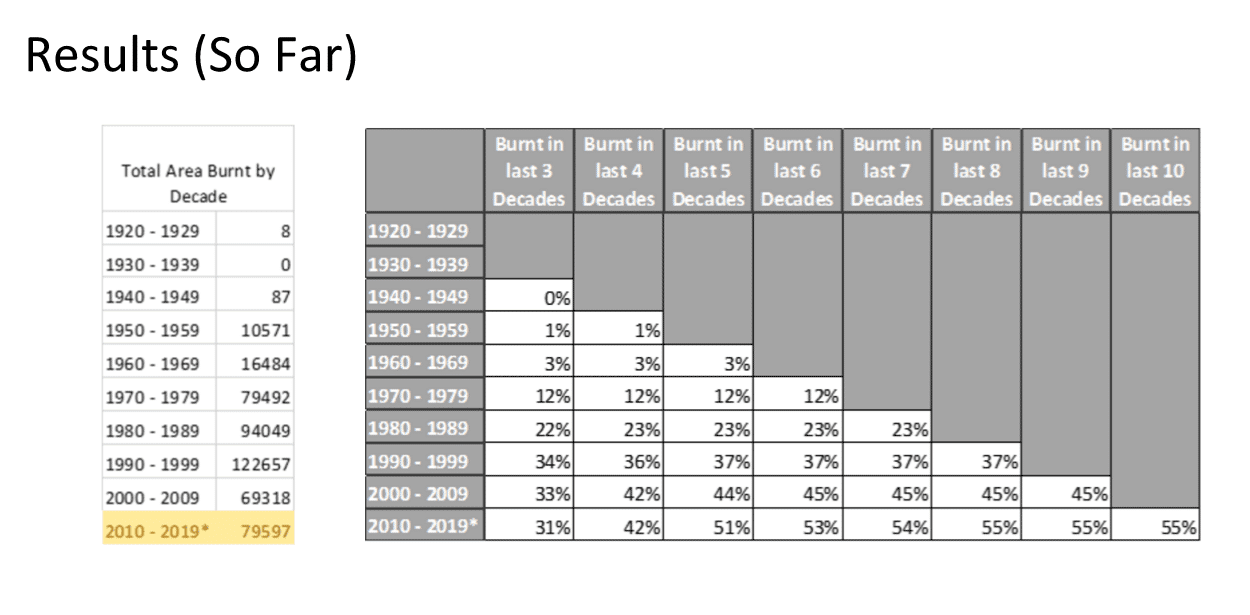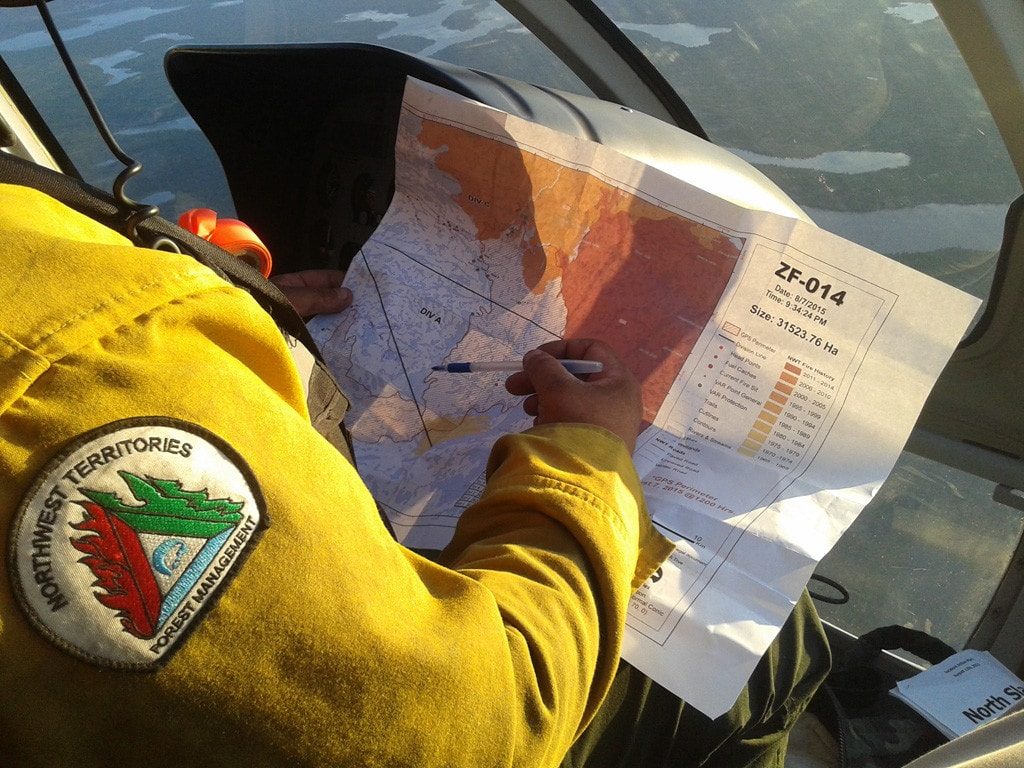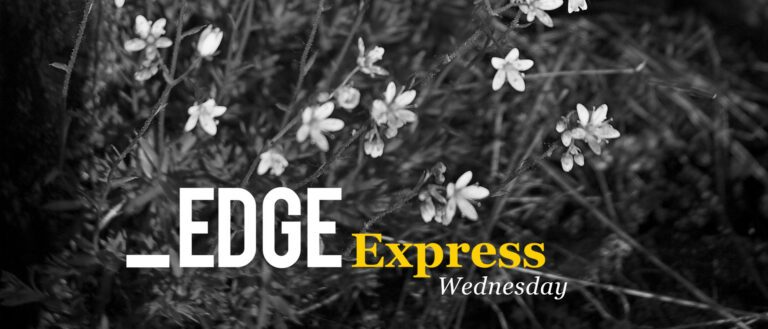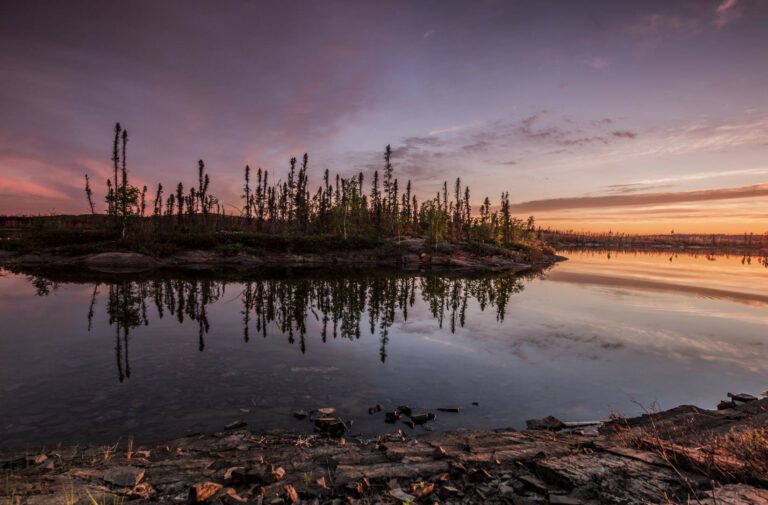In the wake of the Fort McMurray fire, calls for a renewed emphasis on fire suppression have helped kick off the start of western Canada’s 2016 fire season.
Once the default approach to fire management in Canada’s northwest, fire suppression meant initial attack crews hitting the small fires usually caused by lightning as soon as the smoke was spotted.
Ken Hudson was a firefighter stationed decades ago at a former camp near Porter Lake, about 170 kilometres east of Fort Smith in the Taltson watershed area, where initial attack crews were stationed primarily to protect the caribou range.
The number of communities threatened by wildland fire is expected to increase 50-200 percent as a result of climate change, with a comparable increase in evacuations, costs and health impacts.
Article continues below advertisement
In those days, fire crews would work at night when the weather was cooler and the fires were more manageable, and there was more emphasis on boots on the ground than water bombers.
“The approach was to attack when the fires were small and get ‘em out,” Hudson says.
Letting it burn
In the 1970s and ‘80s, forest managers started to realize that fighting all fires was not always desirable or necessary. Though generally successful as a tactic, fire suppression interfered with the natural, regenerative role fire plays in the boreal forest.
Today, the decision to fight or allow fires to burn naturally is based on a “hierarchy of priorities.” In the NWT, priority areas include communities, cabins and other wilderness residences, high-value commercial forests and recreational areas. Ranking lower on the scale are remote forests “of limited economic value” and wilderness parks, though the territorial government notes rare habitat and culturally significant sites will also influence decision-making.
Despite the flurry of demands for increased fire suppression following Fort McMurray, the territorial government says it intends to continue with its current approach, which attempts to strike a balance between protecting priority areas and allowing nature to run its course.
“At this point in time, the Northwest Territories continues to manage fires in accordance with the fire management policy, which has really proven itself to be a very effective tool for our fire environment,” says Richard Olsen, manager of fire operations with the NWT department of Environment and Natural Resources (ENR).
“It recognizes that fire is a natural phenomenon on the land, but at the same time it allows for us to make decisions on protecting values that are important to the NWT and its residents. So it’s always really going to be a balance between the natural role of fire and protecting those values that are important to people. Those kinds of decisions are taken on individual fire events, for the most part.”
When nature becomes unnatural
But just how “natural” are wildfires becoming in the era of climate change?
Across the territory — and the world as a whole — 2016 has been marked by record-breaking warm temperatures. According to NASA, last month was the hottest April on record globally, and the seventh month in a row to have broken global records.
Though increased precipitation over the fall and winter has improved the persistent drought situation in most of the southern NWT, Olsen says the 2016 fire season is expected to be an active one, with hot and dry weather across much of the territory.
Such high temperatures and lasting dry spells are consistent with the impacts of climate change, according to fire behaviour experts like Mike Flannigan at the University of Alberta.
So is the erratic and severe fire behaviour that comes with such weather, including the “fire tornadoes” seen in the complex system that destroyed the Hoarfrost homestead on the East Arm of Great Slave Lake in 2014, and the unpredictable wind events that pushed the Fort McMurray blaze into the city with apparently no warning.
On the fateful day that the Fort McMurray fire took mercilessly to the city’s residential neighbourhoods, the area had been experiencing a record high temperature of 32.6 degrees Celsius.
Those responsible for Canada’s wildland fire management approach recognize that the size and severity of burns are increasing due to climate change. In 2010, the Canadian Council of Forest Ministers updated the Canadian Wildland Fire Strategy (CWFS) — followed by the NWT — in an urgent attempt to align its approach with the quickly changing realities faced by fire managers.
“Climate change has a direct and sometimes dire connection to wildland fire behaviour and consequence,” reads the status update for the CWFS. “Individual governments are acting to mitigate and adapt to the increasing effects of a now universally recognized and globally manifested dilemma.”
Based on climate models for the 21st century, the Canadian Forest Service estimates that by 2040 Canada will experience significantly increased fire occurrence and spread potential due to climate change and related precipitation patterns.
Factoring in public health and safety, the number of communities threatened by wildland fire is expected to increase 50-200 percent as a result of climate change, with a comparable increase in evacuations, costs and health impacts.
In Ontario alone, it’s estimated that meeting those projections would require a doubling of fire suppression resources in order to maintain the current level of fire response in the face of a more severe fire regime.
What can we afford?
Most boreal forest scientists agree that fire suppression is not the way to go; in fact, some even blame aging forests for the severity of the fire that steamrolled Fort McMurray earlier this month.
But even if conditions became so severe that they warranted an increase in fire suppression, it’s unlikely any government could afford to fight all fires in the present reality.
The direct cost of fire suppression ranges between $400 million and $1 billion, and those numbers are climbing each year.
With an average of 8,600 fires burning 2.5 million hectares each year across Canada, the direct cost of fire suppression ranges between $400 million and $1 billion, not including losses, according to the CWFS — and those numbers are climbing each year.
“Suppression effectiveness is nearing physical and economic limits, demanding an even greater level of cooperation and/or a shift in our fire management approach, where fire response becomes even more focused on values at risk, resulting in more escaped fires and larger areas burned,” reads the strategy status update.
For veteran firefighter Ken Hudson, addressing Canada’s spiralling fire situation might not require returning all the way to the old method of fire suppression. But, he says, there are lessons to be learned from the way things used to be done before an additional layer of bureaucracy was involved.
Prior to the creation of the NWT Fire Centre, Hudson says regions and communities had the ability to initiate attack responses to fires at a moment’s notice. Now, Hudson says, the decision whether or not to fight a fire has to be discussed and authorized by officials at headquarters.
“By the time all this happens, the fire has grown considerably,” he says.
Though Hudson understands the territory can’t currently afford to fight all fires in this time of “fiscal restraint,” he says it’s possible more money could be saved if more fires were put out, especially during drought years like in 2014, when over four million hectares burned and cost the government $56.1 million — well beyond their initial budget of around $7.5 million.
“If you think back on how much we spent a few years ago, it’s possible that some of the fires — if they had early action — could have been prevented from growing into the big fires they did,” Hudson says. “Big fires don’t start off big. If you wait and monitor too long, it could result in a big fire costing way out of your budget.”
‘If we want to have caribou’
In the NWT, the dilemma stretches beyond public safety to that of protecting wildlife, most notably the North’s dwindling barren-ground caribou herds.
Adam Bathe is doing his Master’s research on the impacts of fire on biodiversity in the NWT, attempting to determine how much caribou wintering range is still viable and what areas will require protection from fire if caribou are to have a future in the North.
Using a conglomeration of data on burn areas over the last century, Bathe has mapped out the overlay of fires from the last 50 to 100 years — the estimated recovery time for forests to become habitable for caribou after a burn.

Bathe’s research into wildfire and caribou shows that over half of their range has burned in the last century
What his map shows is that 55 percent of their range has burned in the last 100 years, not counting the 2015 fire season. Of that, 31 percent has burned in the last three decades alone.
While caribou have always coexisted with fire, Bathe says the apparent increase in scope of burns signals the need for a discussion about the appropriate amount of range that should be allowed to burn.

Through his research, Bathe hopes to help evaluate the “ecosystem services” provided by each area in the range to identify what areas are the most valuable, ecologically speaking, when it comes to caribou.
Those areas identified as most important for caribou should then be added to the territory’s list of “values at risk” requiring protection, he says.
“It doesn’t have to be the whole range, but we need to understand that it’s a mosaic and certain pieces may be more valuable,” Bathe says. “How to select those and where is a discussion we need to have.”
The map shows 55 percent of their range has burned in the last 100 years, not counting the 2015 fire season. Of that, 31 percent has burned in the last three decades alone.
While Olsen says there have been some discussions around fire and caribou within ENR, but says specific management actions related to fire are not in place right now and caribou habitat is not listed as a specific “value-at-risk.”
“We have been working with our wildlife folks to gain a better understanding of caribou — and other species that are important to the NWT — and their relationship to wildfire and possible options or ways that we can accommodate management of fire and those species,” Olsen says.
“Right now I would say to a large part it’s general discussions and, depending on the fire event and location, we’ll really have to assess those fires according to our policy and the potential risk of different values.”
Bathe says countries like Iceland, where he is doing his Master’s, have already mapped out their landscape by habitat types and ecosystem services. He believes a similar approach could be looked into for the NWT.
Bathe says it will take considerable research and coordination by various divisions of government, but says it will be necessary if caribou are considered a priority for the territory.
“We are going to have to choose a biodiversity regime that provides the correct services to caribou if we want to have caribou,” he says.







